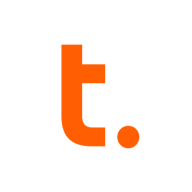

Teradata and Informatica Intelligent Data Management Cloud (IDMC) are leading competitors in the data management category. Teradata stands out due to its unparalleled performance in processing large volumes of data efficiently, while IDMC is appreciated for its extensive data integration and management functionalities.
Features: Teradata offers robust parallel processing capabilities, exceptional scalability, and a highly efficient query execution system, making it a top choice for complex data analytics. Its architecture supports a vast amount of data processing with reliability. IDMC excels in data integration, comprehensive data management, and data cleansing. It integrates smoothly with multiple data sources and possesses extensive data governance functionalities.
Room for Improvement: Teradata can improve its cloud capabilities and user-friendliness and find ways to reduce its high costs. Enhancing integration options and updating the user interface could be beneficial. IDMC faces criticism for its pricing and licensing complexity and should enhance integration support while improving user-friendliness and flexibility.
Ease of Deployment and Customer Service: Teradata provides a flexible deployment model with options for on-premises, hybrid, and public cloud, backed by comprehensive support documentation and training resources, although some users report slow support response times. IDMC offers a user-focused support system with proactive assistance, though initial deployment can be challenging.
Pricing and ROI: Both Teradata and IDMC are premium solutions with significant pricing models. Teradata requires a substantial initial investment but delivers strong ROI through powerful analytics. IDMC has an expensive subscription model, which supports larger organizations effectively despite its cost being prohibitive for smaller enterprises. Both solutions exhibit strong ROI, though IDMC is praised for its ability to enhance data integration efficiency.
Due to the tool's maturity limitations, solutions are not always simple and often require workarounds.
The technical support from Teradata is quite advanced.
Customer support is very good, rated eight out of ten under our essential agreement.
As a SaaS platform, IDMC is quite scalable and provides complete flexibility.
This expansion can occur without incurring downtime or taking systems offline.
Scalability is complex as you need to purchase a license and coordinate with Teradata for additional disk space and CPU.
Stability is crucial because IDMC holds business-critical data, and it needs to be available all the time for business users.
I find the stability to be almost a ten out of ten.
The workload management and software maturity provide a reliable system.
The tool needs to mature in terms of category-specific attributes or dynamic attributes.
Unlike SQL and Oracle, which have in-built replication capabilities, we don't have similar functionality with Teradata.
It ranges from a quarter million to a couple of million a year.
Initially, it may seem expensive compared to similar cloud databases, however, it offers significant value in performance, stability, and overall output once in use.
Teradata is much more expensive than SQL, which is well-performed and cheaper.
The platform's ability to pull in data from other platforms without the need for an additional integration tool enhances its appeal.
The data mover is valuable over the last two years as it allows us to achieve data replication to our disaster recovery systems.


Informatica Intelligent Data Management Cloud (IDMC) is a robust platform used by banks, financial institutions, and health sector organizations for data management, governance, and compliance.
IDMC provides comprehensive tools for data discovery, profiling, masking, and transformation. It supports Salesforce integration, real-time data streaming, and scalable data management solutions. Health organizations manage national product catalogs while financial entities focus on data protection and regulatory compliance. Its intuitive interface, flexible features, and robust tools make it valuable across sectors, though enhancements in data integration and human workflow are being sought.
What are the most important features?
What benefits and ROI should be considered?
Banks and financial institutions use IDMC for data masking, transformation, and compliance, while health sector organizations leverage it for national product catalogs. Industry applications focus on automating business processes, centralizing data, and managing data catalogs to meet regulatory demands and ensure data protection.
Teradata is a scalable data analytics platform designed to meet enterprise demands for large-scale data management and processing, focusing on performance, scalability, and security for complex query executions.
As a leading data warehousing solution, Teradata integrates advanced analytics enabling organizations to derive insights from massive datasets. It supports high-volume data workloads with its architecture optimized for analytical queries. Users benefit from its robust scalability, allowing seamless expansion as data grows. Teradata's SQL engine is compatible with a wide range of data types, ensuring flexibility in data analysis. With advanced security measures, it protects sensitive data across various environments, providing peace of mind to users handling critical information.
What are the most important features of Teradata?Teradata is widely used in industries like finance, telecommunications, and healthcare, where data-driven decisions are critical. Companies leverage its robust analytics capabilities to enhance customer experiences, streamline operations, and ensure compliance with regulatory requirements. In these sectors, quick access to data insights can significantly impact competitive advantage.
We monitor all Data Integration reviews to prevent fraudulent reviews and keep review quality high. We do not post reviews by company employees or direct competitors. We validate each review for authenticity via cross-reference with LinkedIn, and personal follow-up with the reviewer when necessary.